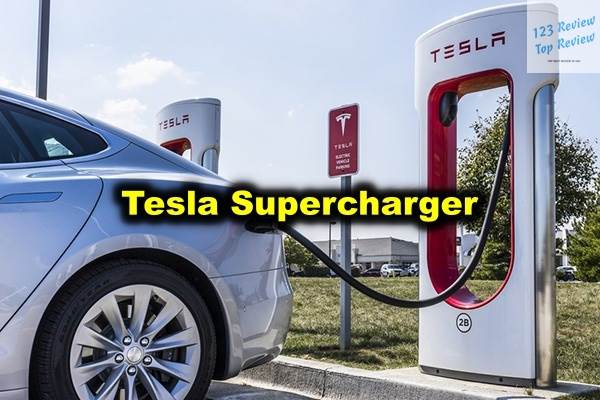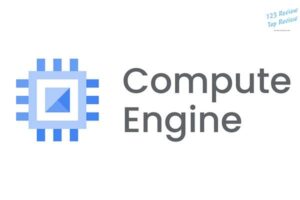These high-speed charging stations are strategically located along popular travel routes and in urban areas, ensuring that drivers can easily access power when needed.
In this article, 123 Review delves into the technology behind Superchargers, their network expansion, charging speeds, cost implications, and the benefits they offer to Tesla owners. Whether you are a current Tesla driver or considering purchasing one, this comprehensive guide will provide you with all the essential information about Tesla Superchargers.
Overview of Tesla Supercharger Network
History and Development of Tesla Supercharger
Tesla’s Supercharger network represents a groundbreaking leap in the electric vehicle (EV) industry. Established in 2012, the network was a response to the pressing need for efficient, widespread charging infrastructure that would support the mass adoption of electric vehicles. The first six Supercharger stations were launched in California, marking the beginning of a transformative journey. Tesla’s vision was clear: to make long-distance travel feasible for EV owners by providing fast and reliable charging solutions.

Over the years, the Supercharger network has evolved significantly. Early Superchargers delivered around 90 kW of power, but technological advancements have continuously pushed these limits. Tesla has remained committed to innovation, ensuring that their charging infrastructure keeps pace with the increasing capabilities and ranges of their vehicles.
Current Number of Supercharger Stations
As of 2024, Tesla operates over 40,000 Supercharger stalls across more than 5,000 locations globally. This extensive network spans North America, Europe, Asia, and other regions, reflecting Tesla’s global reach and dedication to supporting its growing customer base. In key markets like the United States, Europe, and China, Superchargers are strategically placed to facilitate seamless long-distance travel, connecting major cities and popular routes.
Types of Superchargers Available
Tesla’s Supercharger technology has seen multiple iterations. The most common types include:
- V2 Superchargers: Delivering up to 150 kW of power, V2 Superchargers were the standard for many years. They provide a balance between speed and widespread availability.
- V3 Superchargers: Introduced in 2019, V3 Superchargers significantly increased charging speeds, offering up to 250 kW of power. This allows for a quicker charge, reducing the time spent at charging stations.
- V4 Superchargers: The latest in Tesla’s lineup, V4 Superchargers are expected to push the boundaries further, with projected power outputs exceeding 300 kW. These new units aim to reduce charging times even more and enhance the overall user experience.
How Tesla Superchargers Work
Charging Process and Speed
The process of using a Tesla Supercharger is designed to be as simple and user-friendly as possible. Here’s how it works:
- Plug In: Upon arrival at a Supercharger station, drivers plug their Tesla vehicle into an available Supercharger stall. The vehicle and the charger communicate automatically to start the charging process.
- Charging: The charging speed varies based on the Supercharger type and the vehicle’s current state of charge. V2 Superchargers can add approximately 170 miles of range in 30 minutes, while V3 Superchargers can provide up to 75 miles of range in just 5 minutes. The charging speed is fastest when the battery is low and tapers off as it fills up to protect battery health and ensure efficient charging.
- Monitor: Drivers can monitor the charging status through the Tesla app or the vehicle’s infotainment system. Both platforms provide real-time updates on the charging progress and estimated time remaining.
- Unplug and Go: Once the desired charge level is reached, or when the charging session is complete, the driver simply unplugs the vehicle and continues their journey.
Compatibility with Tesla Models
Tesla Superchargers are compatible with all current Tesla models, including the Model S, Model 3, Model X, and Model Y. Each model is equipped with the necessary hardware to connect seamlessly with Superchargers. Tesla’s proprietary connector design ensures a secure and efficient connection, minimizing the risk of charging interruptions or technical issues.
Payment and Billing Methods
Tesla has streamlined the payment process for Supercharging to ensure convenience for all users. Charging fees are automatically billed to the owner’s Tesla account, which is linked to a preferred payment method. Prices can vary depending on the location and time of use. Tesla owners can review their Supercharging history and costs through their Tesla account, making it easy to manage and track expenses.
Benefits of Using Tesla Superchargers
Fast Charging Capabilities
The most significant advantage of using Tesla Superchargers is the fast charging speed. Compared to standard home charging or public Level 2 chargers, Superchargers offer significantly higher power output, drastically reducing the time needed to recharge. This fast charging capability makes long-distance travel much more practical for Tesla owners, allowing them to cover more ground with shorter stops.
Cost Savings Compared to Gasoline
Charging at a Tesla Supercharger is generally more cost-effective than refueling with gasoline. The cost per kilowatt-hour (kWh) for electricity is often lower than the cost per gallon of gasoline, leading to substantial savings over time. Additionally, the efficiency of electric vehicles further amplifies these savings, as electric motors convert more energy into motion compared to internal combustion engines.
Convenience of Location
Tesla has strategically placed Supercharger stations along major highways, popular travel routes, and in urban centers. These locations are chosen to maximize convenience for Tesla owners, ensuring that charging is available where and when it’s needed most. Many Supercharger stations are located near amenities such as restaurants, cafes, and shopping centers, allowing drivers to make the most of their charging time.
Locating Tesla Superchargers
Using the Tesla App
The Tesla app is a powerful tool for locating Supercharger stations. It provides real-time information on the location, availability, and charging speed of nearby Superchargers. The app also allows users to navigate directly to the selected Supercharger and monitor their vehicle’s charging status remotely.
In-Car Navigation System
Tesla’s in-car navigation system is integrated with the Supercharger network, providing drivers with route planning that includes optimal charging stops. The system calculates the most efficient route based on the vehicle’s current charge level, the distance to the destination, and the availability of Superchargers along the way. This integration ensures that Tesla owners can embark on long journeys with confidence, knowing that charging is always within reach.
Tesla Website Charger Map
The Tesla website features an interactive Supercharger map that allows users to search for charging stations, view real-time availability, and plan their trips. This online tool is particularly useful for pre-trip planning and for those who prefer to explore charging options on a larger screen.
Recent Developments in Supercharger Accessibility
Opening to Non-Tesla Vehicles
In a bid to promote the broader adoption of electric vehicles, Tesla has begun opening its Supercharger network to non-Tesla EVs. This initiative started in Europe and has gradually expanded to other regions. By allowing non-Tesla vehicles to access the Supercharger network, Tesla aims to improve charging infrastructure accessibility for all EV owners and foster a more inclusive electric mobility ecosystem.
Introduction of New Charging Technologies
Tesla continues to push the envelope with new charging technologies. The development of V4 Superchargers is a testament to this commitment, promising higher power outputs and faster charging times. Additionally, Tesla is exploring advancements in battery technology and charging protocols to further enhance the efficiency and reliability of its charging network.
Expansion Plans for 2024
Tesla’s expansion plans for 2024 are ambitious, with a focus on increasing the number of Supercharger locations and enhancing coverage in underserved areas. The company aims to add thousands of new Supercharger stalls globally, ensuring that all Tesla owners have access to fast and reliable charging infrastructure. This expansion is crucial as the number of Tesla vehicles on the road continues to grow, necessitating a robust and extensive charging network.
Tesla Supercharger Fees and Pricing
Fee Structures Explained
Tesla Supercharger fees are typically based on the amount of energy delivered (measured in kWh) or the time spent charging. The pricing structure can vary by location, with some regions offering variable rates depending on the time of day. This dynamic pricing model encourages off-peak charging, helping to manage demand and optimize the use of Supercharger stations.
Idle Fees and How They Work
To ensure that Superchargers remain available for other users, Tesla implements idle fees for vehicles that remain plugged in after reaching full charge. These fees are designed to incentivize drivers to move their vehicles promptly once charging is complete, maximizing the availability of charging stalls for other users. The idle fee structure varies by location but is generally higher in busy or high-demand areas.
Cost Comparisons with Other Charging Networks
When compared to other public charging networks, Tesla Superchargers are often competitively priced. While the exact cost can vary, Tesla’s pricing is generally in line with or lower than other high-speed charging networks. The combination of cost, convenience, and charging speed makes Tesla Superchargers an attractive option for Tesla owners.
Conclusion
The Tesla Supercharger network is a cornerstone of Tesla’s success in the electric vehicle market. By providing fast, reliable, and widespread charging infrastructure, Tesla has made long-distance travel feasible for EV owners and significantly contributed to the broader adoption of electric vehicles. With continuous advancements in charging technology and an ongoing commitment to expansion, the future of Tesla Superchargers looks promising, ensuring that Tesla owners will continue to enjoy the benefits of fast and convenient charging for years to come.





